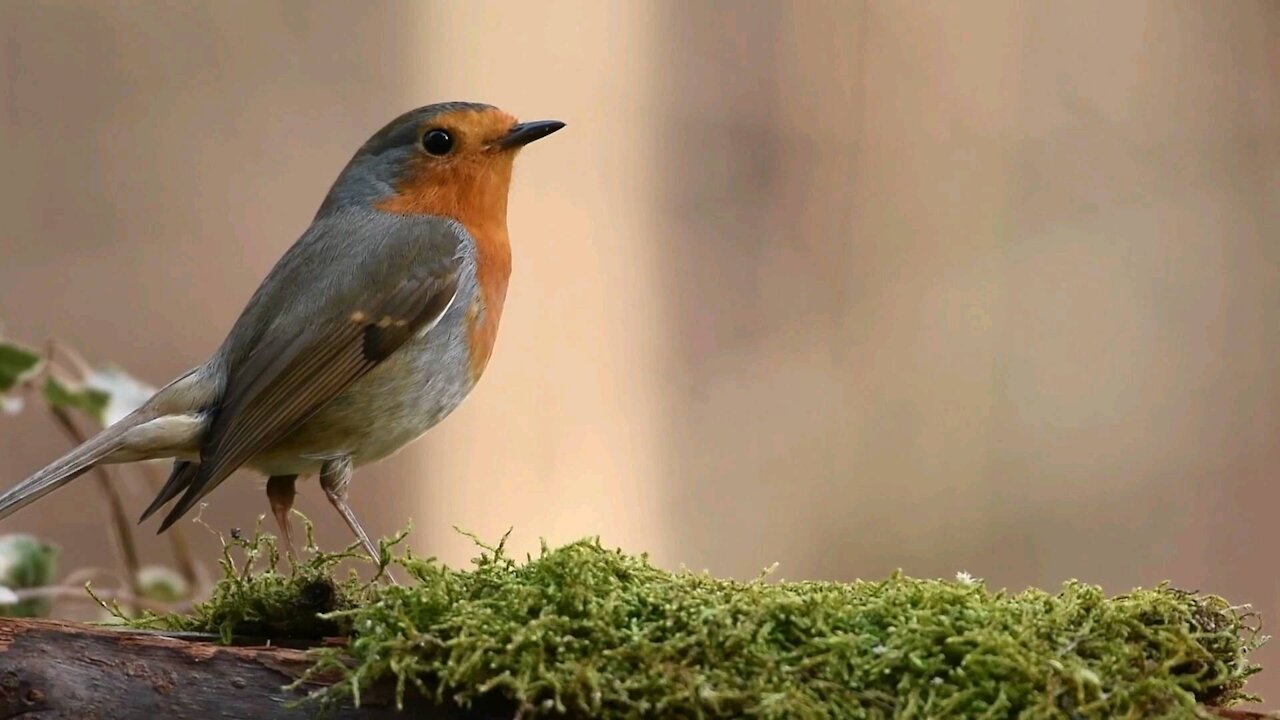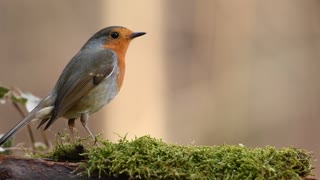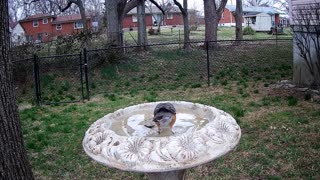Premium Only Content

Robin Bird in the Forest
The American robin (Turdus migratorius) is a migratory songbird of the true thrush genus and Turdidae, the wider thrush family. It is named after the European robin[2] because of its reddish-orange breast, though the two species are not closely related, with the European robin belonging to the Old World flycatcher family. The American robin is widely distributed throughout North America, wintering from southern Canada to central Mexico and along the Pacific Coast. It is the state bird of Connecticut, Michigan, and Wisconsin. According to the Partners in Fight database (2019), the American robin is the most abundant bird in North America (with 370,000,000 individuals), ahead of red-winged blackbirds, introduced European starlings, mourning doves and house finches.[4] It has seven subspecies, but only one of them, the San Lucas robin (T. m. confinis) of Baja California Sur, is particularly distinctive, with pale gray-brown underparts.
The American robin is active mostly during the day and assembles in large flocks at night. Its diet consists of invertebrates (such as beetle grubs, earthworms, and caterpillars), fruits, and berries. It is one of the earliest bird species to lay its eggs, beginning to breed shortly after returning to its summer range from its winter range. The robin's nest consists of long coarse grass, twigs, paper, and feathers, and is smeared with mud and often cushioned with grass or other soft materials. It is among the earliest birds to sing at dawn, and its song consists of several discrete units that are repeated.
The adult robin's main predators are hawks, domestic cats, and snakes. When feeding in flocks, it can be vigilant, watching other birds for reactions to predators. Brown-headed cowbirds (Molothrus ater) lay their eggs in robin nests (see brood parasite), but the robins usually reject the egg.
-
 1:37
1:37
Expert Videos Magnetic Media
3 years agoDolphin kisses a little girl and brings her a gift
46044 -
 0:21
0:21
osamakh
4 years agoRobin Bird 1
3012 -
 0:21
0:21
aityounes
4 years agorobin bird in nature
134 -
 0:44
0:44
HarryAir
4 years ago $0.47 earnedForest Bird Song
8803 -
 1:56
1:56
Number9Production
3 years agoRobin at bird bath March 18, 2021
50 -
 10:39
10:39
Cooking with Gruel
1 day agoMastering a Succulent London Broil
19.2K3 -
 22:15
22:15
barstoolsports
17 hours agoWhite Elephant Sends Barstool Office into Chaos | VIVA TV
15.7K -
 3:30:40
3:30:40
MrNellyGB
5 hours ago🔴LIVE - GRINDING MARVEL RIVALS RANKED! | #RumbleTakeover #RumblePremium
9.27K -
 1:23:42
1:23:42
Game On!
15 hours ago $7.09 earnedPatrick Mahomes is GOOD TO GO! Chiefs ready to DISMANTLE the Texans!
45K5 -
 8:38:13
8:38:13
Dr Disrespect
1 day ago🔴LIVE - DR DISRESPECT - MARVEL RIVALS - I AM GROOT
369K73